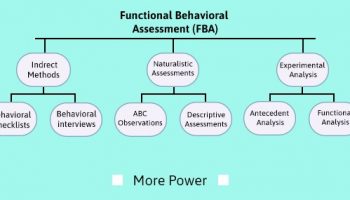The IB Math AA HL course is a challenging program that requires students to develop strong problem-solving skills.
The course covers a broad range of mathematical concepts, including calculus, algebra, geometry, and statistics. To succeed in the course, students need to be able to solve complex problems that require critical thinking, creativity, and attention to detail.
Unfortunately, many IB Math AA HL problems can be quite challenging, and students may feel overwhelmed or unsure of where to begin. However, with the right approach, any problem can be broken down into smaller, more manageable parts, and solved using a step-by-step process.
In this article, we will provide a step-by-step guide to solving challenging IB Math AA Higher Level problems. We will cover techniques for understanding the problem, developing a strategy, implementing the strategy, and checking your work. We will also provide examples of challenging problems and step-by-step solutions using the techniques outlined in the guide.
Understanding The Problem
The first step in solving any challenging problem is to understand the problem itself. This means breaking down the problem into smaller, more manageable parts, and identifying the key information and concepts.
To do this, read the problem carefully, and underline or highlight any important information. Look for key phrases such as “solve for,” “find the value of,” or “prove that.” These phrases can help you identify the task you need to accomplish.
Next, identify any mathematical concepts or formulas that are relevant to the problem. Look for key phrases such as “using the Pythagorean theorem” or “applying the chain rule.” These phrases can help you identify the tools you need to solve the problem.
Finally, look for any constraints or assumptions that the problem imposes. For example, the problem may state that the values must be positive, or that a particular function must be continuous. These constraints can help you identify any limitations or assumptions you need to make when solving the problem.
Developing A Strategy
Once you understand the problem, the next step is to develop a strategy for solving it. This means choosing the appropriate formulae, equations, or theorems to apply to the problem, and using visualization and other problem-solving techniques to develop a plan of attack.
To develop a strategy, start by reviewing the relevant concepts and formulas. If you’re unsure of how to apply a particular formula, review your notes or consult your textbook. Once you have a good understanding of the relevant concepts and formulas, consider how you can apply them to the problem at hand.
One useful technique for developing a strategy is visualization. This means imagining the problem in a concrete, visual form, and using diagrams, sketches, or other visual aids to help you solve it. For example, if the problem involves calculating the volume of a complex shape, you might sketch the shape and break it down into simpler components.
Another useful technique is to work backward from the answer. This means starting with the desired solution and working backward to identify the steps you need to take to get there. For example, if the problem requires you to find the value of x, you might start by plugging in the given values to an equation and working backward to isolate x.
Implementing The Strategy
Once you have developed a strategy, the next step is to implement it. This means following your plan of attack step by step, using the relevant formulas, equations, and theorems.
As you work through the problem, be sure to show your work and label your calculations clearly. This will make it easier to check your work and ensure that your solution is accurate.
If you encounter a challenging step, don’t get discouraged! Take a moment to review your notes or consult your textbook. It’s okay to ask for help from your teacher or classmates if you’re struggling.
As you work through the problem, be sure to check your work regularly. This means double-checking your calculations, checking that you’ve used the correct formulae and equations, and ensuring that your solution makes sense in the context of the problem.
Checking Your Work
Finally, once you have solved the problem, the last step is to check your work. This means verifying that your solution is correct and accurate, and checking that you haven’t made any mistakes along the way.
One useful technique for checking your work is to plug your solution back into the original problem and see if it makes sense. For example, if the problem required you to find the area of a circle, you could plug your solution back into the formula for the area of a circle and see if it matches the given information.
Another technique is to check your calculations using a calculator or computer program. This can help you identify any rounding errors or other mistakes that may have slipped through the cracks.
Example Problems
To illustrate the techniques outlined in this guide, let’s consider a few examples of challenging IB Math AA HL problems and step-by-step solutions.
Example 1: Find the derivative of f(x) = ln(x^2 + 4x)
Solution:
- Identify the problem: Find the derivative of f(x) = ln(x^2 + 4x).
- Develop a strategy: Use the chain rule to find the derivative of ln(x^2 + 4x).
- Implement the strategy:
f'(x) = [1/(x^2 + 4x)] * (2x + 4)
= (2x + 4)/(x^2 + 4x)
- Check your work: Double-check that you’ve used the chain rule correctly and that your solution makes sense.
Example 2: Given that sin(x) = 3/5 and x is in quadrant 2, find the values of cos(x) and tan(x).
Solution:
- Identify the problem: Given that sin(x) = 3/5 and x is in quadrant 2, find the values of cos(x) and tan(x).
- Develop a strategy: Use the Pythagorean identity to find cos(x), then use the definition of the tangent to find tan(x).
- Implement the strategy:
cos(x) = -sqrt(1 – sin^2(x)) = -4/5
tan(x) = sin(x)/cos(x) = -3/4
- Check your work: Verify that your values of cos(x) and tan(x) make sense given the given information about x.
Solving challenging IB Math AA HL problems can be intimidating, but with the right approach, you can tackle even the most difficult problems. By following the steps outlined in this guide – identifying the problem, developing a strategy, implementing the strategy, and checking your work – you can work your way through challenging problems and arrive at the correct solution.
Remember, the key to success in IB Math AA HL is not just knowing the formulas and equations, but also being able to apply them to real-world problems. Practice, persistence, and a willingness to ask for help when needed are the keys to mastering this subject and achieving success on the IB exam.
Read Also:




























